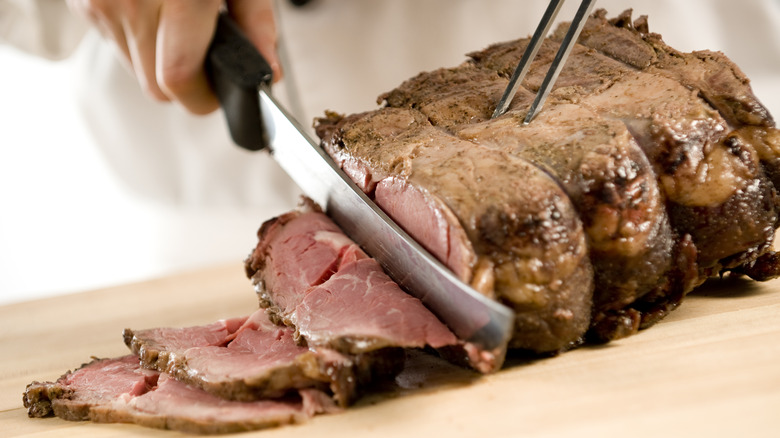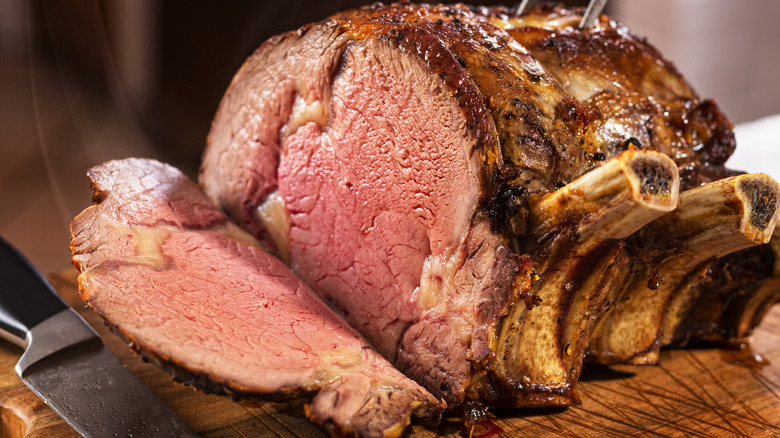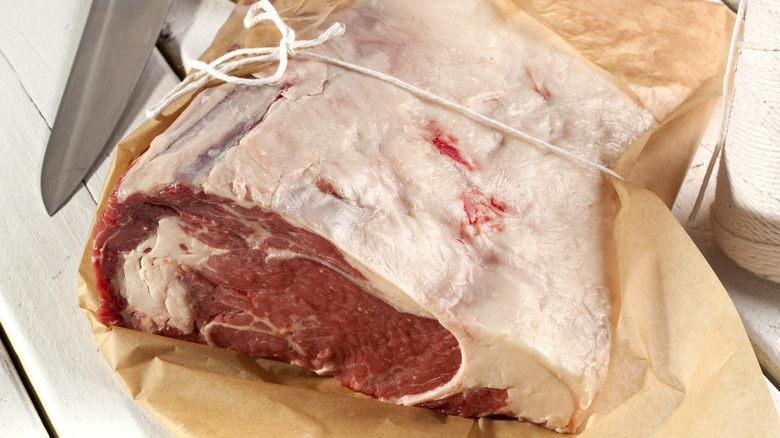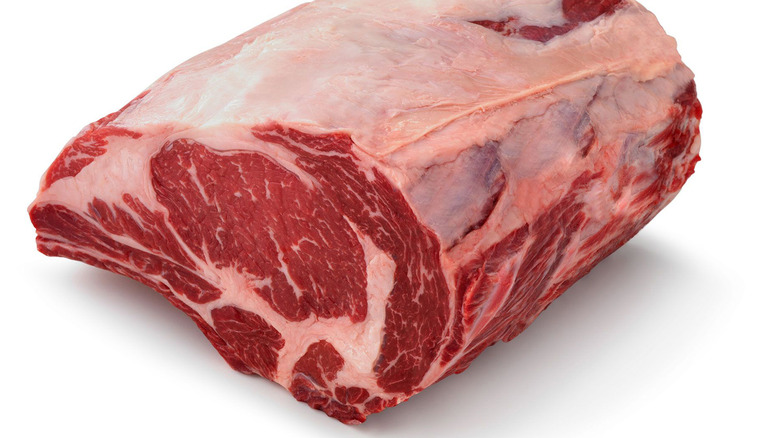3 Popular Cuts Of Rib Roast, Explained
When it comes to pleasing a crowd, there are few cuts of beef better than a rib roast. The large hunk of beef produces a tender and flavorful slice of meat. The dish is simple to prepare in abundant quantities, and unlike many steaks, leftovers are easy to reheat.
However, initiating the rib roast preparation feels intimidating. The most immediate hardship is the size — no one wants to tarnish such a volume of meat. Add in the fact that it's slow-cooked, which makes it difficult to know what's happening in the oven. Finally, there's the confusion of the cut itself.
All rib roasts are sourced from the section behind the ribs of a cow up to the shoulder, but each cut is then delineated into one of three subsections of beef with distinct fat contents. Whether it's the bone-in standing rib roast, boneless rolled rib roast, or extra fatty rib-eye roast, they all necessitate tailored cooking techniques. Let's dive into the distinctions.
A standing rib roast offers succulent bone-in cooking
The largest of the three subsections, the standing rib roast includes anywhere from three to seven ribs, all bone-in. The cut is taken from the back half of the cow, and is typically prepared vertically so that the fat from the exterior runs down, thereby moisturizing the beef. With a balance of fat, meat flavor, and size, it's one of the most esteemed large cuts of beef; in fact, this is the same section as prime rib. The latter is simply a USDA-regulated designation that refers to the fat content and age of the cow.
As such, cooking a standing rib roast is done with the utmost care, as the cut often fetches a high price. Many chefs cut off the bones prior to cooking to ensure the beef is cooked through evenly. Additionally, checking the internal temperature during preparation is a must — it's paramount the cut isn't overcooked.
Rolled rib roast eases the beef prep
The rolled rib roast originates from the same section of the cow as the standing rib, however, it's sold sans bones. The meat is tied into a long circular shape, with a layer of fat on the exterior that spirals throughout the interior. While similarly textured to the standing rib, this cut is slightly less flavorful. Such a characteristic is due to the lack of bones.
The exclusive meat arrangement impacts cooking, too. In a standing rib, the bone structure facilitates more even heat application. Plus, the areas attached to the bone infuse with more fat and tissue — all flavorings. Nevertheless, the rolled rib will still deliver a tasty roast with less fuss involved. And the cut costs less, especially since the bone weight is not included in the price. Just be extra mindful of the heating temperature and duration of cooking time, as rolled rib is more prone to drying out. Though, when executed perfectly, it yields a delicious roast beef.
A rib-eye roast strikes the perfect balance of fat content
Finally, there's the rib-eye roast. Taken from a boneless section in the middle of the ribs, it strikes a tender equilibrium of fat and meat content. This is due to its location on the animal far up in a section of the back that doesn't experience much movement; this quality creates delectable marbling, which yields a melt-in-the-mouth texture.
With its balanced fat content and flavor, it's especially delicious when cooked rare or medium rare. Utilize a cooking method that starts with a high temperature for a few minutes and then transitions to a lower temperature for the bulk of the roasting time. Avoid prolonged high heat exposure — it'll melt the interior fat, ruining the delicate balance.
Out of all rib roast cuts, the rib-eye is best suited to other cooking methods as well. It can be seared on a pan or grilled, and it's not too dissimilar to a rib-eye steak. If you've purchased a cut, prepare it with the method most familiar to you. With a high cost per pound, it'd be especially disappointing if you were unsatisfied with the end result.



